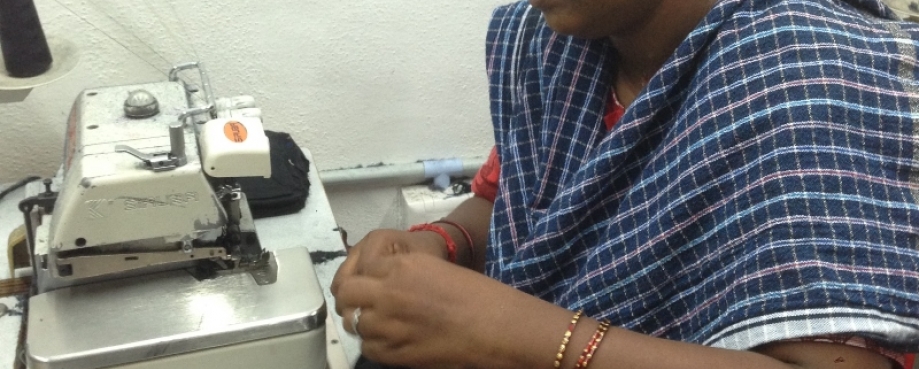
“We should have sensed that a storm was about to come. The work orders had been reducing since January accompanied by delayed payment. I haven’t received any payment since February and now I have no work. Coronavirus has come as a tsunami in our lives.” Jayalakshmi Darman, a homeworker working in the garment sector in Tiruppur, India
In this guest blog, Janhavi Dave of HomeNet South Asia outlines what global and domestic brands must to do protect homeworkers, the backbone of the garment industry
Jayalakshmi’s words echo those of many homeworkers across global and domestic supply chains in Bangladesh, India, Nepal and Pakistan.
These homeworkers take up a range of work in South Asia’s garment supply chains - from attaching buttons to looping in drawstrings, cutting loose threads, andeven stitching the entire garment. Many homeworkers also add value to garments with their embroidery and embellishment work.
Homeworkers are often the secondary breadwinners of the family, with their income used to purchase food and daily essentials. But the economic fallout of COVID-19 has amplified the issues they routinely face, including their lack of recognition as workers, irregular work, low income, no social security and inadequate government support.
Homeworkers are an integral part of the garment supply chains and have contributed to the success of garment brands for decades. But in South Asia, they are at the very bottom of those supply chains, and hugely vulnerable, working long hours for wages well below the prescribed minimum wage which have now, with orders at a standstill due to Covid-19, dwindled to nothing.
With the announcement of lockdowns, homeworkers are now confined to their homes with no paid work and no food. They also are now burdened with additional care work. Ground reports indicate that many are also facing domestic violence.
In South Asia, many governments have announced support packages for the vulnerable. But these can be slow to reach those in need and are often insufficient. In Tiruppur, India, many homeworkers did receive the INR 500 (less than $USD 7) promised by India’s Central Government but this in no way matches the income they have lost. Additionally, while the government has been distributing free food rations, migrant workers, who form a significant part of the demographic in Tiruppur, are not eligible as they do not possess the necessary documentation.
During this crisis, homeworker organisations have come out in support of each other. SAVE in Tiruppur is leading advocacy efforts on behalf of homeworkers in the garment sector. Home-Based Women Workers Federation (HBWWF) in Karachi is tirelessly working towards providing food supplies to homeworkers and their families. And SEWA, in Delhi, is connecting informal economy women workers to government relief programmes.
It has also been noted that homeworkers who have organised into social enterprises are the only ones who have been able to access work during this period. The social enterprise SABAH Nepal is employing homeworkers to make masks and coveralls for frontline workers. Its CEO Robin Amatya says, “The business has taken a backseat during this time of crisis. We are only hoping to ensure that all our homeworker members have access to work and income. Our product lines may not sell for the next 18 months and we are exploring different essential product supply chains through online marketing. Even though it looks difficult at the moment, we hope that once the situation improves, the brands will continue to provide us work.”
Given this grim scenario and the need for timely interventions, HomeNet South Asia (HNSA) - a network of home-based worker organisations across all South Asian countries, representing over 900,000 home-based workers - has the following demands for Global and Domestic Retail Garment Companies-
- Brands (Global and Domestic Retail Companies) need to honour existing orders and make payments to suppliers
- Brands (Global and Domestic Retail Companies), who recognise homeworkers in their supply chains must ensure that their due payments are made
- Global Retail Companies should continue providing work to South Asian countries, as they have been doing so in the past
- Brands (Global and Domestic Retail Companies) to invest in partnerships with cooperatives/ producer companies of homeworkers as direct suppliers
- Regional Offices of Global Retail Companies to participate in multi-stakeholder platforms so as to work in partnership with suppliers and worker representatives.
HNSA and the member organisations mentioned above are all participating in the Hidden Homeworkers project, led by Traidcraft Exchange and co-funded until 2023 by the European Union to work with apparel and footwear brands sourcing from India, Nepal and Pakistan. To find out more please contact Lucy Brill in the UK at Homeworkers Worldwide in the UK, or Janhavi Dave at HNSA in Bangalore.
